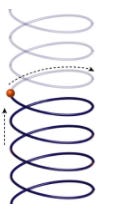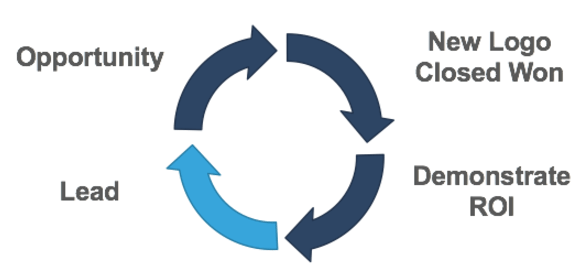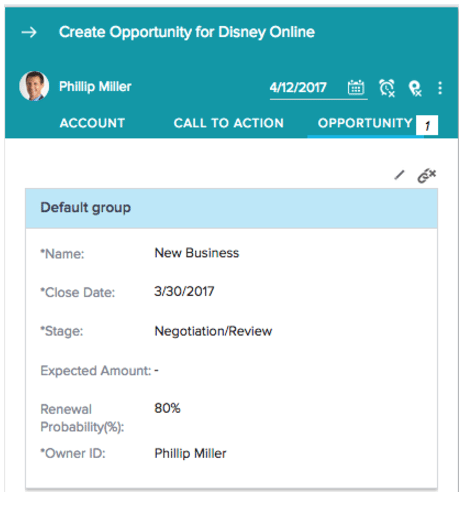The Chief Revenue Officer’s Guide to Customer Success: Revenue Growth in the Helix
April 28, 2018
If you’re a Chief Revenue Officer, you wake up every morning thinking about how to grow faster.
That will never change. But as your company shifts to a recurring revenue business model, the way that you grow must change.
10 years ago, you were thinking about the Pipeline of hand-offs. How to manage hand-offs from Marketing to Sales Development, hand-offs from Sales Development to Sales Reps, and transitions from Stage A to Stage B — as quickly as possible, at the highest price, as predictably as possible.
Today, the best CRO’s know that strong revenue growth doesn’t come from a straight-and-narrow Pipe. It comes from the Helix.
Let’s step back. Where does revenue come from, in a recurring revenue business model?
Leads are the start AND end of the Pipe. When you demonstrate to a customer that they’ve achieved a financial return on their purchase, you’ve created at least 3 new leads:
A lead for a Renewal event: This customer is prime to be renewed.
A lead for an Expansion deal: This customer will be amenable to get even more value from their partnership with you. In fact, there may be multiple expansion opportunities.
A lead for a New Logo: This customer will be happy to speak to a prospective customer about the value they’ve achieved. In fact, they’ll be willing to speak to multiple prospects.
If you make your customers successful, you can turn 1 new lead into 3+ leads. And in turn, those 3 incremental leads result in 3 x 3 = 9+ new leads. And those 9+ leads result in 9 x 3 = 27+ new leads. That’s exponential growth.
You’re not just looping around. You’re looping around AND moving on up. In fact, the Helix truly looks like this. With exponential growth in leads, the jump from loop to loop actually widens as you ascend.
The growth pattern of successful recurring revenue companies resembles an expanding Helix: the successful customer brings you back to your starting point (leads), but your company is increasingly better off than it was before.
Driving revenue growth as a Helix requires a new way of working.
Your Company in the Helix
10 years ago at your company, every department was siloed from the others. Hand-offs between them were often the only interactions. And every hand-off was highly scrutinized. This is the world of Sales arguing with Marketing over the quality of the leads, Marketing arguing with Product about whether there was enough “demo ware,” etc.
Today, your company’s organizational model is flipped 90 degrees. If it’s not now, it will be in 5 years.
Every department needs to work across the customer lifecycle. Here’s what this means for the departments that are aligned to revenue:
Sales: Driving deals at every point on the customer’s journey. They’re closing new logos, renewals, and expansions.
Marketing: Driving pipeline at every point on the customer’s journey. They’re finding new leads, finding expansion leads, and finding customers who will generate new leads.
Customer Success: Driving value at every point in the customer’s journey. They’re holding value workshops and planning discussions during pre-sales, they’re defining value workstreams at the kickoff call, and they’re demonstrating value attainment during Executive Business Reviews.
These 3 departments work together across the customer journey, in unison. They’re like a symphony: each department playing a different instrument but in harmony with the others.
Your Pipeline in the Helix
Each department has a new charter. That means each department’s success needs to be measured differently from before.
Each department needs a target that captures how they’re driving each of 3 revenue events: new logo, renewal, expansion.
New LogoRenewalExpansionSalesNew Logo ARRRenewed ARRExpansion ARRMarketingMarketing Qualified New-logo Leads (MQNLs)Marketing Qualified Renewal Leads (MQRLs)Marketing Qualified Expansion Leads (MQELs)Customer SuccessCustomer Success Qualified Advocacy (CSQAs)Customer Success Qualified Healthy Customers (Habits Scorecard)Customer Success Qualified expansion Leads (CSQLs)
As you can see from this chart, pipeline is coming from your existing customers. It’s all around you. You’re swimming in pipeline.
Your Go-to-Market in the Helix
Your recurring revenue business model is telling you that there’s a better Go-to-Market approach than what you’ve done in the past.
Your customers propel your Go-to-Market. Here’s how. There are 9 plays that CROs can use to drive revenue in the Helix:
(1) Lead: Enable and Incent Post-Sales Team to Create Leads
Everyone who interacts with the customer should be a source of leads.
Create a set of triggers for support, professional services, training, and CSMs (if you have them) to help them know when it’s time to send a lead to sales. Make the process streamlined so it results in a new “lead” in Salesforce for the AE – as if it came from Marketing.
And incent each team member with a simple and transactional reward system.
(2) Opportunity: Put Healthy References In Front of Sellers In Real-time
Many companies build marketing reference teams and a complex process for reps to get references from Marketing. While this can be important for key references, the most valuable references are the ones that are “name dropped” in real-time on a first call between a rep and a prospect. However, the death knell for any deal is “name dropping” a reference that’s actually unhappy. So lots of reps don’t even try.
One of the biggest values of Customer Success is to provide actionable information for sales. Sales reps should have, right in their Opportunity view in Salesforce, a list of happy, referenceable clients related to the prospect, in real-time.
(3) Close: Capture Desired Client Outcomes at Deal Closure
Reps have the most critical information in their heads right as they move the Opportunity to Closed Won in Salesforce – why the client is buying. Make sure that is captured in a Success Plan at deal closure. Not only will this help the Onboarding and CSM teams, but also it will help the rep nail the future Executive Business Reviews to realign with the exec sponsor and drive renewal and up-sell. Come up with a structured and streamlined Success Plan template – integrated into Salesforce.com – to make the hand-off seamless.
(4) Onboarding: Survey Customer 30 Days After Sale and Incent Rep On Answer
At the end of the day, Helix revenue is driven by closing high quality deals. Sales teams want to bring on customers that will stay and grow – with the right expectations upfront. Survey new clients automatically 30 days after Closed Won and ask the client a simple question: “On a scale of 1-5, how well did [sales rep] set your expectations in the sales cycle?” Don’t hold the sales rep accountable for the whole experience – hold the rep accountable for the expectations.
Make this a carrot incentive and pay out a bonus for every 5/5 survey.
(5) EBR: Crush Your EBR With A Success Plan, White Space, and Killer Deck
The funny thing about “Executive” Business Reviews is they often don’t attract or impress “executives” at clients. They are frequently poorly-organized and very tactical. Change this by having:
A standard playbook for accountability in an EBR – between the rep, CSM and others
A Success Plan (captured from the sales cycle) that you can use to frame the meeting around the client’s desired outcomes
A “white space analysis” beforehand showing what the client owns and is using – and what more they could benefit from
An automated process to produce the deck in a consistent, data-driven and high quality fashion
(6) Expansion: Jump On Good Moments When They Happen To Drive Up-sell
Customer relationships aren’t always great. They have their ups and downs.
Great companies jump on the “up” moments to expand relationships. When a client gives you a 10/10 on a NetPromoter Survey, has a successful launch, has a great support experience or shows high product activity, you need to be on it.
Operationalize a mechanism such that sales can get engaged right away during every positive moment in the customer journey. And track which ones end up yielding closed expansions.
Rinse and repeat.
Also, make sure you’re not blindsided by existing customer risk during this process. Make sure every rep has a full view of client risk (adoption, surveys, support, services, etc.) The worst thing you can do is call a client for an up-sell during a sev 1 escalation.
(7) Renewal: Get Ahead of Sponsor Risk
The number one killer of renewals is sponsor change. When you lose your sponsor at an account:
Find out immediately (via social media, for example)
Create a standard playbook with accountability between the rep and CSM
Craft a standard email template to reach out to the new sponsor
Send a gift basket for extra measure!
Define a streamlined “re-introduction” deck for the new sponsor and automate it, if possible, to include a company overview, the history of the relationship and usage / value / outcomes driven thus far
Don’t forget your former sponsor; follow them to wherever they go next (gift basket!) and generate a new lead in the process
(8) Automate: Get More High Quality Time By Automating Low Value Tasks
Work diligently through the lifecycle to automate:
Reference lookup (e.g., via name drop references on the Opportunity)
Desired outcome capture (e.g., via surveys)
Routine email outreaches (e.g., via email templates)
Executive Business Review preparation (e.g., via automation of deck creation)
Call preparation (e.g., via a client health scorecard)
Renewal notifications (e.g., via automated emails)
(9) Bonus: Scale Customer Success By Making It Virtual
Customer Success isn’t all about CSMs. You can use standardization and automation to push the “Customer Success” process to:
Sales reps
Account managers
Renewal reps
Services managers
Support managers
Marketing (for smaller clients)
And even partners
If you’d like to learn more about how to drive these 9 plays to achieve Revenue Growth in the Helix using Gainsight, feel free to get in touch with Allison at apickens@gainsight.com.
















